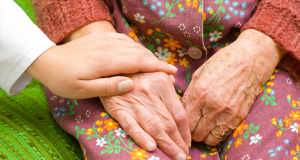 There is a concern that, if the situation continues, social mobility may go backwards
There is a concern that, if the situation continues, social mobility may go backwardsEqual Pay Day doesn’t always occur on the same date every year, although it has taken place on the same date for the past three years. The chosen date is calculated by working out the pay gap for that year.
The size of the gender pay gap (0.141) is multiplied by the number of days in a year. For 2018, this is 52. This number is then counted back from the end of the year, to give 10th November. Essentially, this is the day where UK male workers will earn what females will get for working the whole calendar year.
The fact that this figure has been the same for the past three years suggest little improvements have been made recently in trying to close the gender pay gap, despite the Equal Pay Act of 1970, and the Equality Act of 2010.
Experts suggest that it will probably take an additional 100 years to close the gender pay gap, based on current rates of progress.
Indeed, different groups of women can experience wide variations in pay inequality. For example, women from ethnic minorities suffer from the largest gap in pay compared to British white men. Woman in their 30s are also at a disadvantage because of their increased likelihood of going on maternity leave.
Factors such as a divided labour market, where women are more likely to take low-paid, part-time work requiring fewer skills, are also fuelling the pay gap.
Closing the gap
A charity that campaigns for gender pay equality, The Fawcett Society, believes we can all play a role to close the gender pay gap. Spreading awareness is vital and according to the charity, one-in-three workers don’t realise that it’s illegal to pay men and women differently for doing the same work.
The Fawcett Society is encouraging workers to get involved with their campaign to stamp out gender pay inequality. Workers can do this by ending the culture of pay secrecy and talking with colleagues to find out how much they earn. It’s this secrecy regarding earnings which is allowing pay inequality to flourish. The charity is also urging people to take to social media and post a photo of yourself with an equals sign, as well as spreading the hashtags #GetEqual and #EqualPayDay.
You can also donate to a special fund that helps females on low incomes to access vital legal advice to help put an end to pay discrimination in the workplace. The Fawcett Society is working in partnership with YESS Law to provide people with the relevant legal information.
Although it might seem like a difficult task to close the gender pay gap, it’s not impossible, as the country of Iceland has proven. It took no-nonsense measures to stamp out pay inequality, by legally forcing companies with more than 25 employees to prove equal pay.
In the UK, new legislation came into force earlier this year requiring firms with over 250 staff to disclose their gender pay gap data. While many firms missed this deadline, the data given showed that more than 75% of UK companies pay men more.








